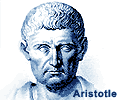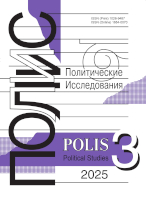Dynamics of the spectrum of European political parties (1990-2021)
Makarenko B.I.,
Center for Political Technologies, Moscow, Russia; HSE University, Moscow, Russia, bmakarenko@yandex.ru
elibrary_id: 251052 | ORCID: 0000-0002-0136-8785 | RESEARCHER_ID: L-3134-2015
Petrov I.I.,
HSE University, Moscow, Russia, iip95d@gmail.com
ORCID: 0000-0003-3856-2503 | RESEARCHER_ID: AAE-4305-2021Article received: 2022.06.29. Accepted: 2022.09.12

DOI: 10.17976/jpps/2023.01.03
EDN: AVJAJL
Makarenko B.I., Petrov I.I. Dynamics of the spectrum of European political parties (1990-2021). – Polis. Political Studies. 2023. No. 1. https://doi.org/10.17976/jpps/2023.01.03. EDN: AVJAJL
The article analyzes the prerequisites and features of the evolution of political party systems in 25 member countries of the European Union in the past three decades. To complete the analysis, the authors elaborated a unique index of measurement of party’s manifestos, which enabled them to provide a typology of ideological and political doctrines of political parties. This typology is laid out in a two-dimensional space with crosscutting axes: socio-economic (horizontal) and “cultural”, or “non-economic values” (vertical). The main trends of the evolution, according to the authors (as described in the first sub-chapter of the article), are a leftward shift of the complete spectrum of parties, a growing salience of the “non-economic” axis, particularly for rightwing and populist parties, a weakened dominance of the “vital center” of mainstream center-right and center-left parties, the rise of populism, and a significant variation of evolution scenarios of party systems in post-communist countries. The second and third parts discuss the features of evolution of, respectively, center-left and center-right parties, which serve in most European countries as a nuclei of party systems. Center-left parties are suffering losses at elections due to growing competition with diverse opponents, such as the “new left”, “greens” and multiple varieties of populists. Center-right parties are in search of a viable strategy to compete with right-wing populists. The authors conclude that the changes in the party systems in recent decades were caused by objective prerequisites and were very substantial, though party systems retained their basic properties and remained the main institutions to represent public interests in the domain of politics. This also applies to populist parties which became a legitimate component of European party systems.
References
Arzheimer, K. & Carter, E. (2006). Political opportunity structures and right‐wing extremist party success. European Journal of Political Research, 45(3), 419-443. https://doi.org/10.1111/j.1475-6765.2006.00304.x
European Journal of Political Research, 45(3), 419-443. https://doi.org/10.1111/j.1475-6765.2006.00304.x
Bakker, R., de Vries, C., Edwards, E., Hooghe, L., Jolly, S., Marks, G., Polk, J., Rovny, J., Steenbergen, M., & Vachudova, M.A. (2015). Measuring party positions in Europe: The Chapel Hill expert survey trend file, 1999-2010. Party Politics, 21(1), 143-152. https://doi.org/10.1177/1354068812462931
Carvalho, J., & Ruedin, D. (2019). The positions mainstream left parties adopt on immigration: a crosscutting cleavage? Party Politics, 26(4), 379-389. https://doi.org/10.1177/1354068818780533
Dalton, J., Farrell, D., & McAllister, I. (2011). Political parties & democratic linkage. New York: Oxford University Press.
Dalton, R.J. (1996). Political cleavages, issues, and electoral change. In L. LeDuc, R.G. Niemi, & P. Norris (Ed.), Comparing Democracies: Elections and Voting in a Global Perspective (pp. 319-342). Thousand Oaks: Sage.
Eysenck, H. (1975). Sense and nonsense in psychology. New York: Penguin Books.
Faye, J.-P. (2002). Le siecle des ideologies. Paris: Colin.
Global trends: paradox of progress. (2017). A publication of The National Intelligence Council. https://nsarchive.gwu.edu/document/22574-document-10-national-intelligence-council-nic
Green-Pedersen, C. (2019). The reshaping of West European party politics: agenda-setting and party competition in comparative perspective. Oxford: Oxford University Press. https://doi.org/10.1093/oso/9780198842897.001.0001
Gunther, R., & Diamond, L. (2003). Species of political parties: a new typology. Party Politics, 9(2), 167-199. https://doi.org/10.1177/13540688030092003
Hutter, S., & Kriesi, H. (Ed.) (2019). European party politics in times of crisis. Cambridge: Cambridge University Press.
Heywood, A. (2013). Politics (4th ed.). Houndmills: The Palgrave Macmillan.
Hooghe, L., & Marks, G. (2018). Cleavage theory meets Europe’s crises: Lipset, Rokkan, and the transnational cleavage. Journal of European Public Policy, 25(1), 109-135. https://doi.org/10.1080/13501763.2017.1310279
Inglehart, R. (1971). The silent revolution in Europe: intergenerational change in post-industrial societies. American Political Science Review, 65(4), 991-1017. https://doi.org/10.2307/1953494
Inglehart, R. (1997). Modernization and postmodernization: cultural, economic and political change in 43 societies. Princeton: Princeton University Press.
Inglehart, R., & Norris, P. (2016). Trump, Brexit, and the rise of populism: economic have-nots and cultural backlash. HKS Working Paper No. RWP16-026. http://dx.doi.org/10.2139/ssrn.2818659
Jahn, D. (2011). Conceptualizing Left and Right in comparative politics: towards a deductive approach. Party Politics, 17(6), 745-765. https://doi.org/10.1177/1354068810380091
Kirchheimer, O. (1966). The transformation of the Western European party systems. In J. La Palombara, M. Weiner (Ed.), Political Parties and Political Development (pp. 177-200). Princeton, NJ: Princeton University Press.
Kitschelt, H. (1995). The formation of party cleavages in post-communist democracies: theoretical propositions. Party Politics, 1(4), 447-472. https://doi.org/10.1177/1354068895001004002
Kriesi, H., Grande, E., Lachat, R., Dolezal, M., Bornschier, S., & Frey, T. (2006). Globalization and the transformation of the national political space: six European countries compared. European Journal of Political Research, 45(6), 921-956. https://doi.org/10.1111/j.1475-6765.2006.00644.x
Laver, M., & Budge, I. (1992). Measuring policy distances and modelling coalition formation. In M. Laver, & I. Budge (Ed.), Party Policy and Government Coalitions (pp. 15-40). Basingstoke: Macmillan. https://doi.org/10.1007/978-1-349-22368-8_2
Lijphart, A. (1999). Patterns of democracy: government forms and performance in thirty-six countries. New Heaven: Yale University Press.
Lipset, S.M., & Rokkan, S. (Ed.) (1967). Party systems and voter alignments: cross-national perspectives. New York: The Free Press.
Mudde, C. (2004). The populist Zeitgeist. Government and Opposition, 39(4), 541-563. https://doi.org/10.1111/j.1477-7053.2004.00135.x
Panebianco, A. (1988). Political parties: organization and power. Cambridge: Cambridge University Press.
Schlesinger, A. (1949). The vital center: the politics of freedom. Boston: Houghton Mifflin Company.
Tavits, M., & Letki, N. (2009). When left is right: party ideology and policy in post-Communist Europe. American Political Science Review, 103(4), 555-569. https://doi.org/10.1017/S0003055409990220
Volkens, A., Bara, J., Budge, I., McDonald, M.D., & Klingemann, H.-D. (Ed.). (2013). Mapping policy preferences from texts: statistical solutions for manifesto analysts. Oxford: Oxford University press. https://doi.org/10.1093/acprof:oso/9780199640041.001.0001
Dunn, J. (2016). Breaking democracy’s spell. (Russ. ed.: Dunn, J. Ne ocharovyvat’sya demokratiei. Moscow: Gaidar Institute Publishing House).
Duverger, M. (2000). Les partis politiques. (Russ. ed.: Duverger, M. Politicheskie partii. Moscow: Academic Project).
Isaev, B. (2008). Teoriya partii i partiinykh system [Theory of parties and party systems]. Moscow: Aspect press.
Lipset, S.M. (2016). Political man. The social bases of politics. (Russ. ed.: Lipset, S.M. Politicheskii chelovek: sotsial’nye osnovaniya politiki. Moscow: Mysl’).
Makarenko, B.I. (Ed.) (2015). Partii i partiinye sistemy: sovremennye tendentsii razvitiya [Parties and party systems: current development trends]. Moscow: Political Encyclopedia.
Oskolkov, P. (2020). Ethnic parties and ethnic voting: conceptualization problems and development factors. World Eсonomy and International Relations, 64(8), 112-118. https://doi.org/10.20542/0131-2227-2020-64-8-112-118
See also:
Suvakovic U.,
Political parties as traditional mechanisms of representation in modern societies. – Polis. Political Studies. 2010. No2
Alekseyenkova Ye.S.,
The decline of populism? Crisis of trust and parties of political alternative in modern Italy. – Polis. Political Studies. 2024. No4
Peregudov S.P.,
The XXI Century Liberalism – Crisis or Rejuvenation?. – Polis. Political Studies. 2015. No4
Sokolshchik L.M.,
American Conservatism and the Callenge of Contemporary Populism: Theoretical and Ideological Aspects. – Polis. Political Studies. 2021. No1
Smorgunov L.V.,
Network political parties. – Polis. Political Studies. 2014. No4





.jpg)






 print
print
.jpg)
.jpg)